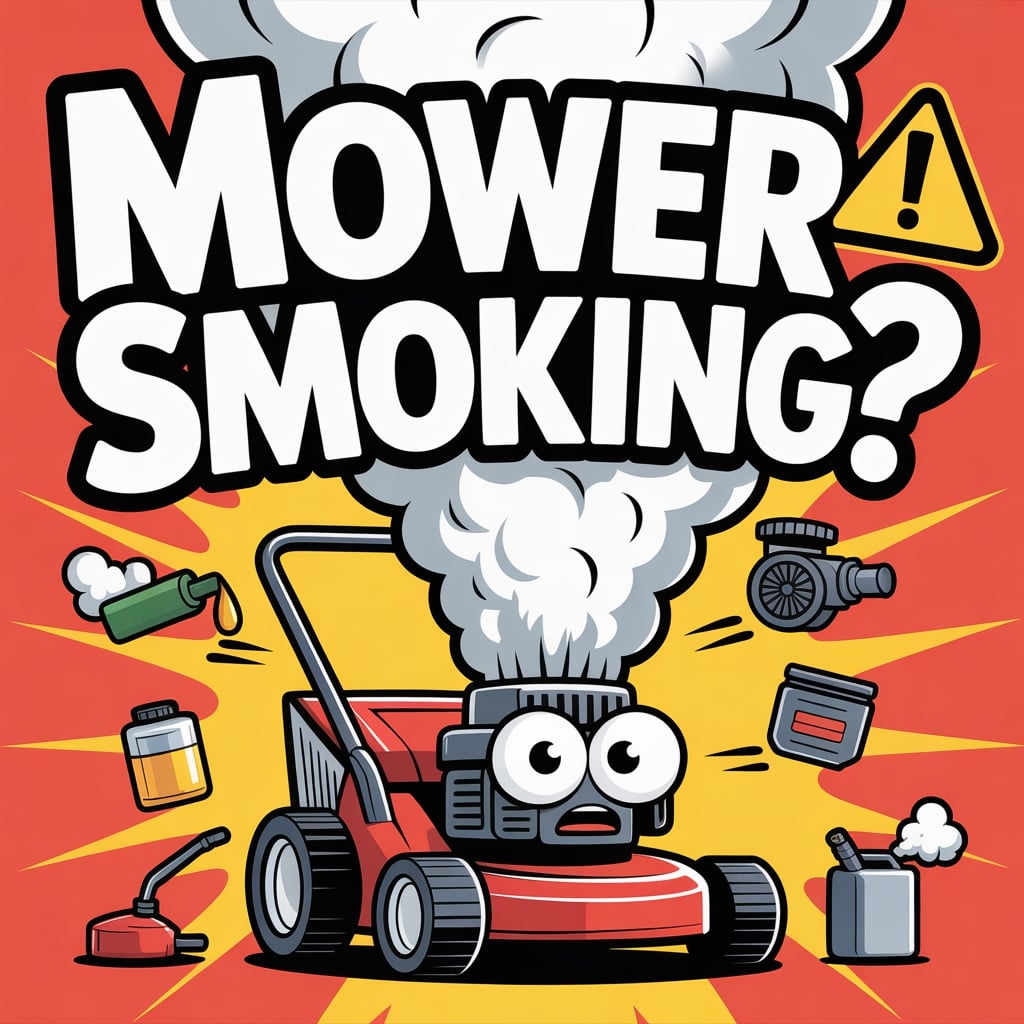
If your mower suddenly starts puffing out smoke like it’s trying to BBQ your yard, relax. You’re not the first homeowner this happened to, and you won’t be the last. Mowers smoke for all kinds of reasons — some serious, most not. Half the time it’s just blowing white smoke because somebody tipped it the wrong way, or it’s burning oil because the crankcase is overfilled by about a quart and a half. Happens to everyone.
Fast check: If the smoke smells sweet and oily, it’s usually the mower complaining about too much oil. If it smells like straight-up gasoline, that’s fuel running rich. And if it smells like burning mulch… well, that’s probably because you’ve got a chunk of grass sitting on the muffler. Yes, it really does smoke that much.
This whole breakdown covers the real reasons lawn mowers smoke, plus the quick fixes that actually work in U.S. yards — stuff a neighbor would tell you over the fence, not corporate nonsense.
Quick hook to help you diagnose the smoke fast:
White smoke?
Usually oil where it shouldn’t be
Blue smoke?
Engine’s getting old or seals are tired
Black smoke?
Running rich — think air filter, carb mix, or fuel overflow
Burning smell?
Debris on muffler or a small oil leak hitting hot metal
Quick hook to help you diagnose the smoke fast:
- White smoke? Usually oil where it shouldn’t be
- Blue smoke? Engine’s getting old or seals are tired
- Black smoke? Running rich — think air filter, carb mix, or fuel overflow
- Burning smell? Debris on muffler or a small oil leak hitting hot metal
Alright, let’s get into what the smoke actually means and why your mower is acting like a backyard chimney…
Why Lawn Mowers Smoke: 12 Causes & Fixes
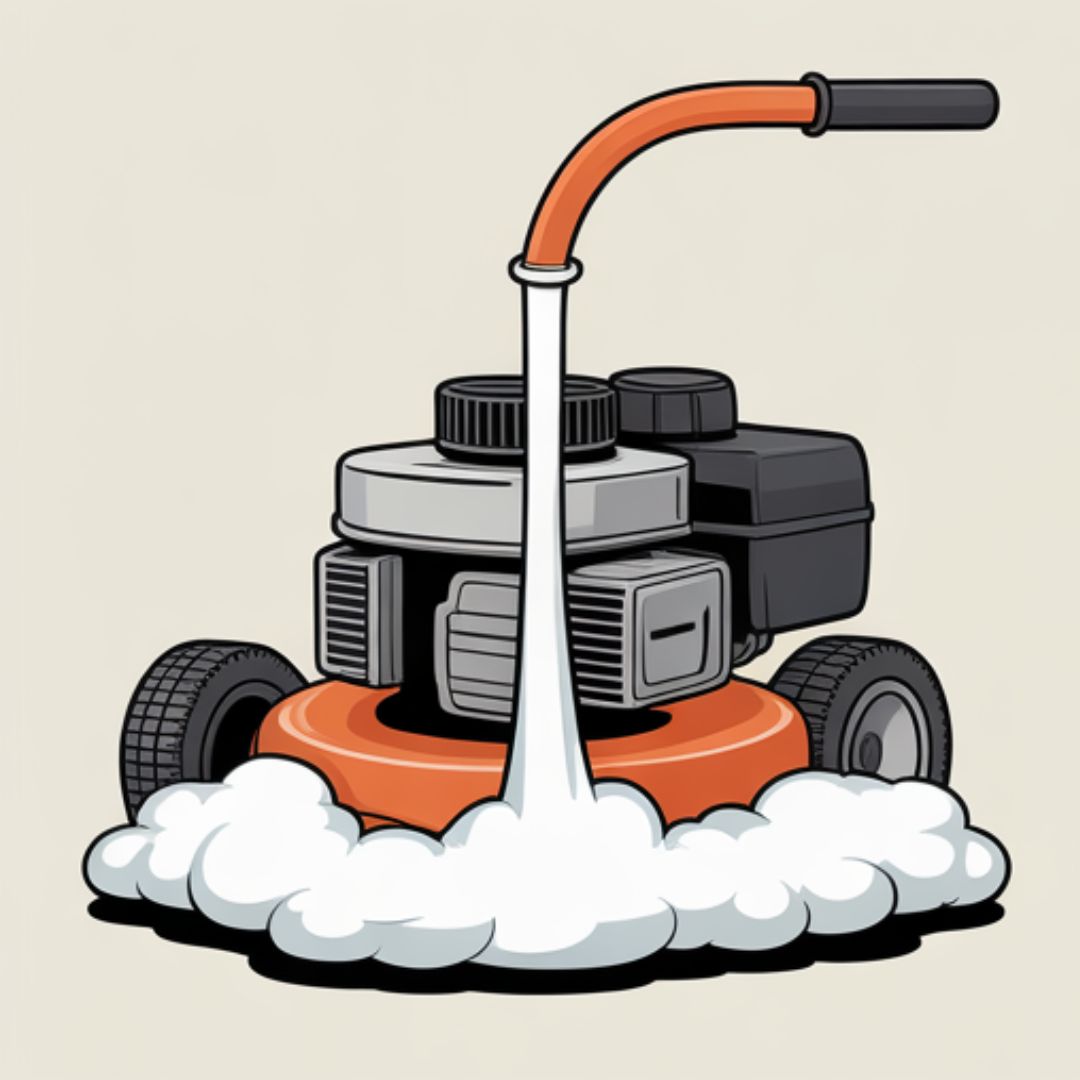
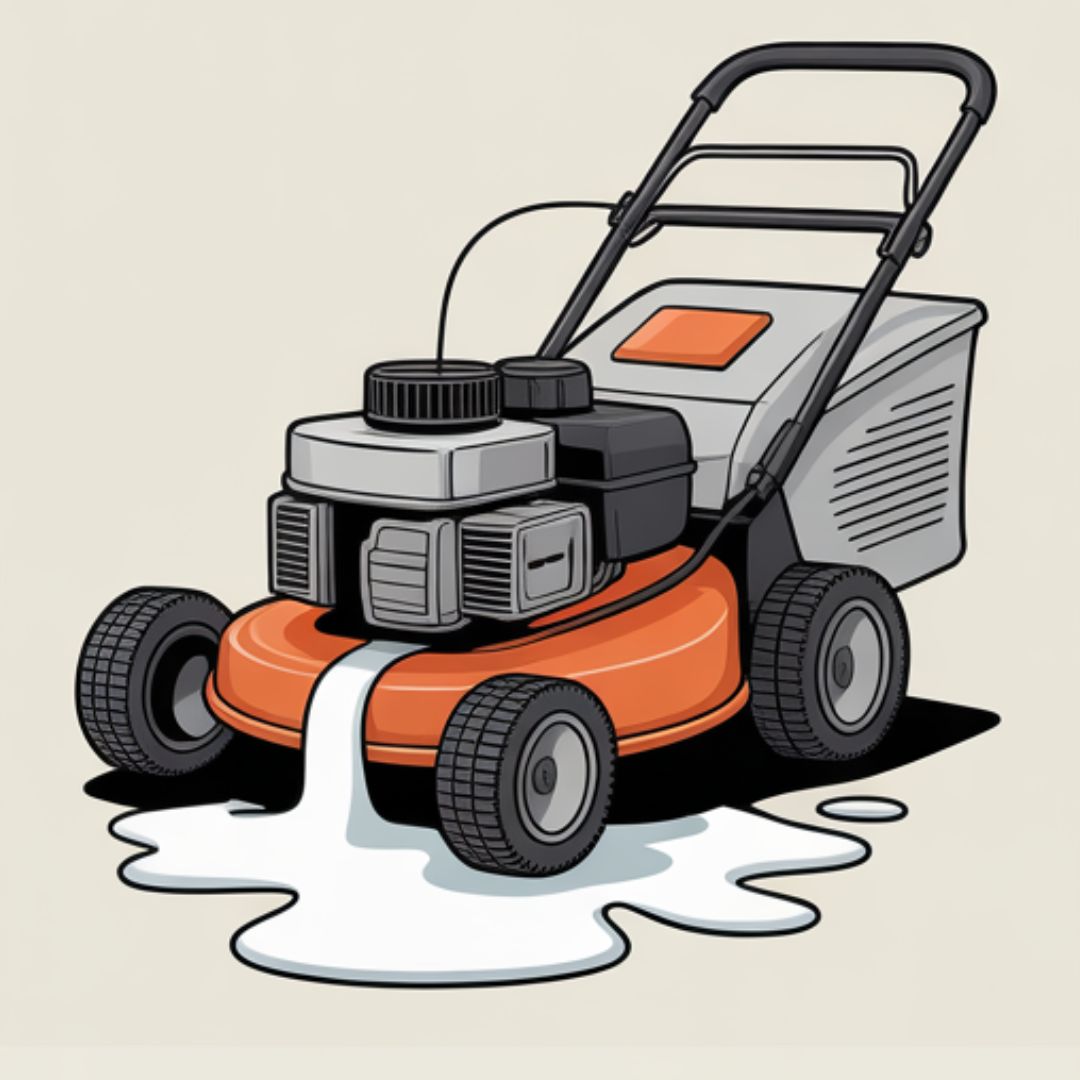
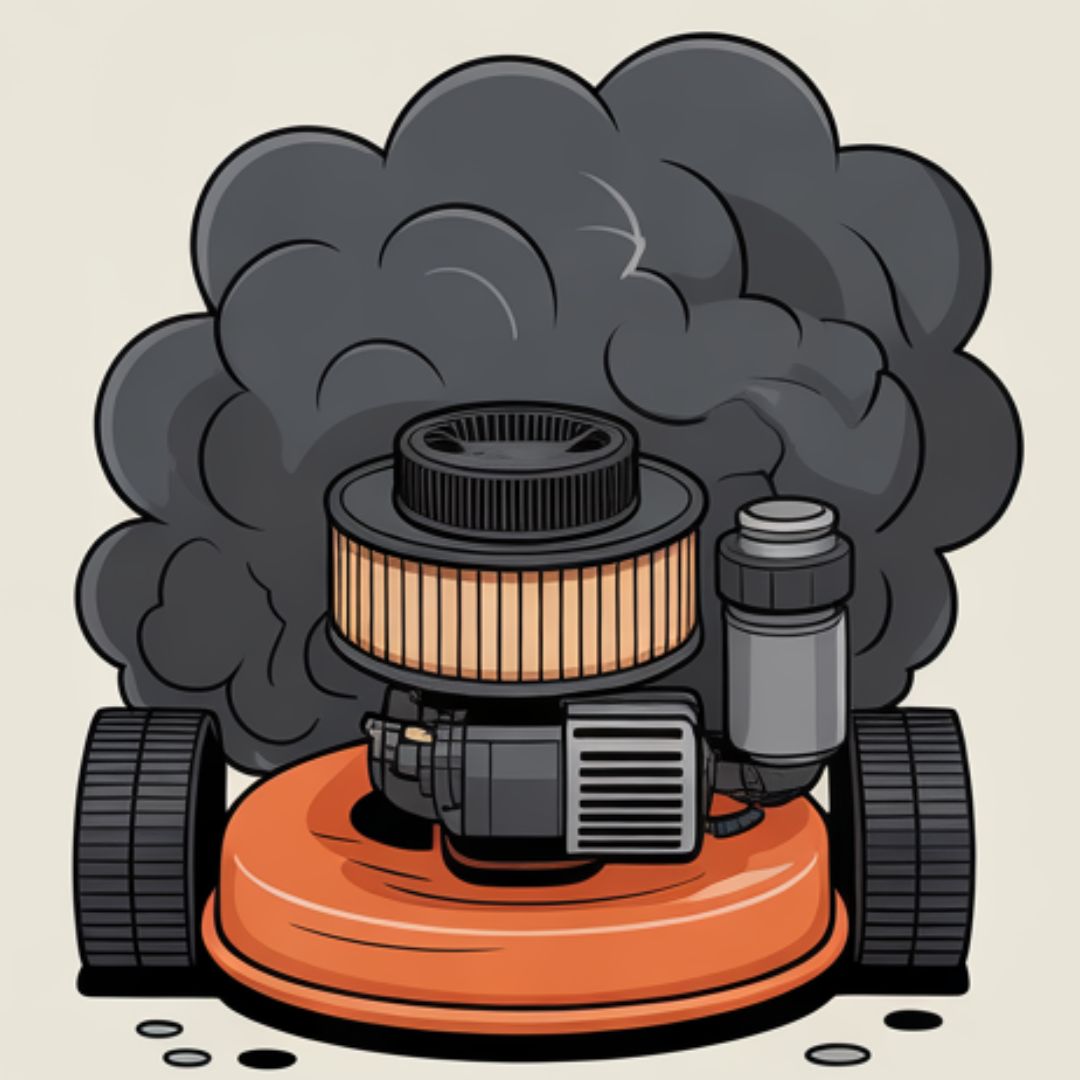
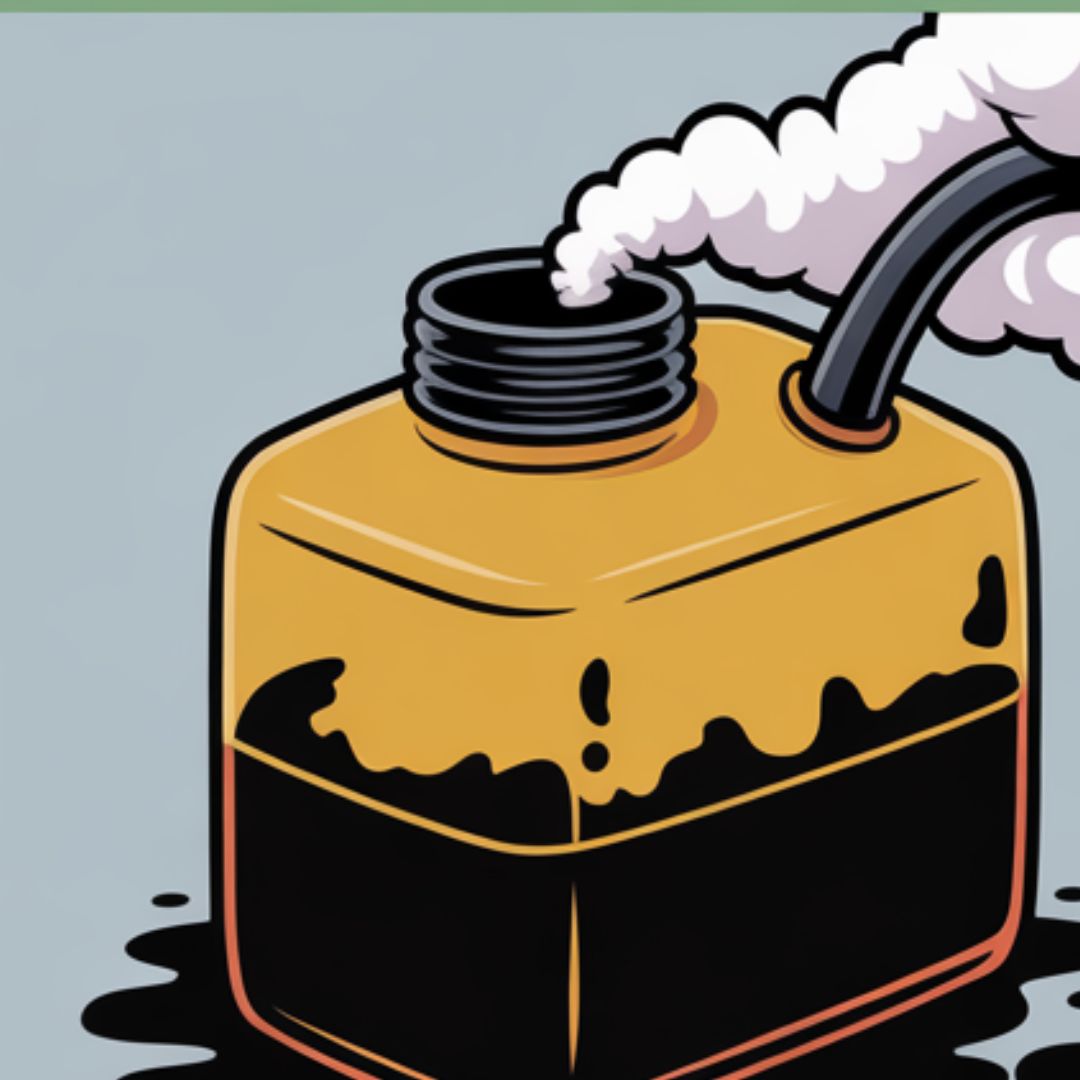
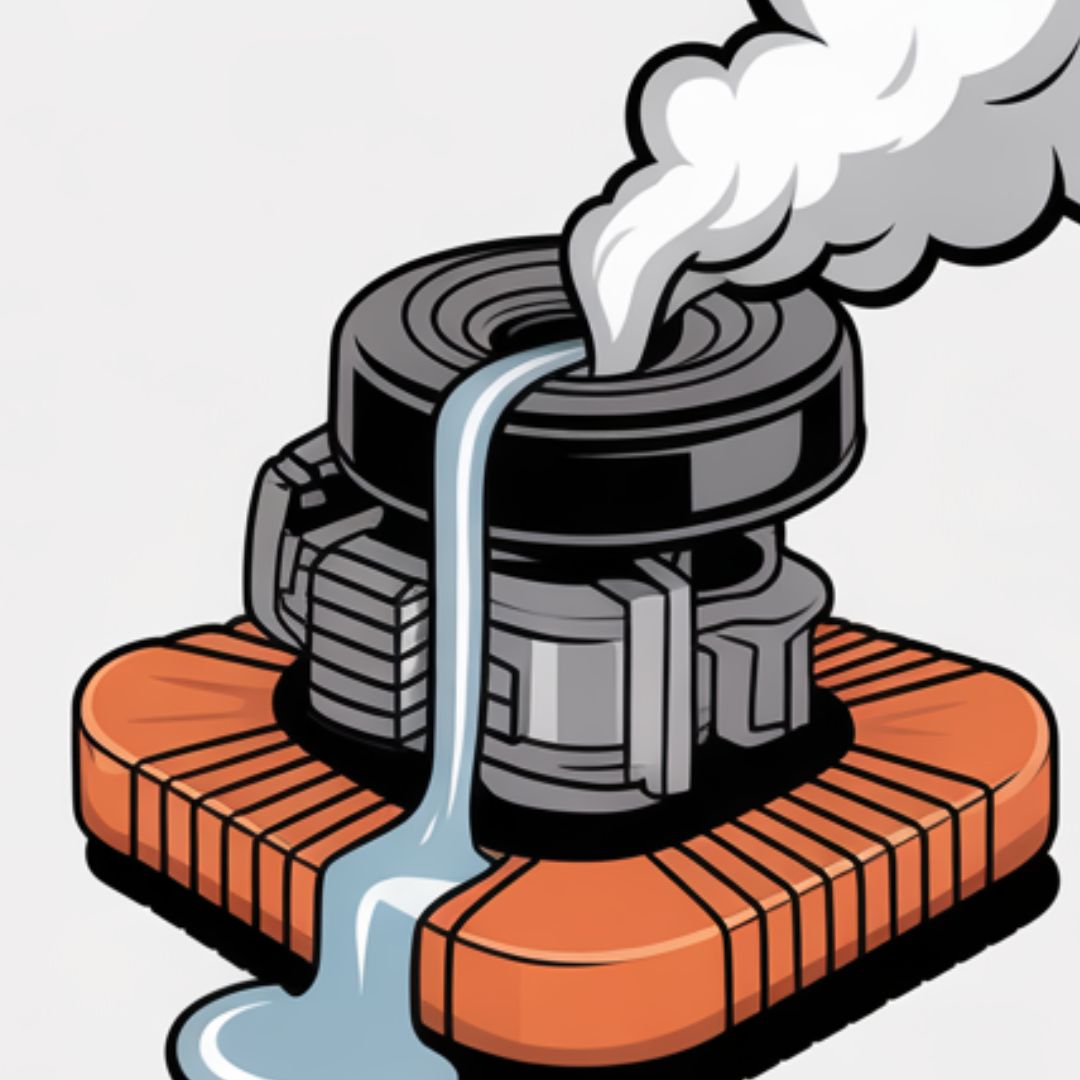
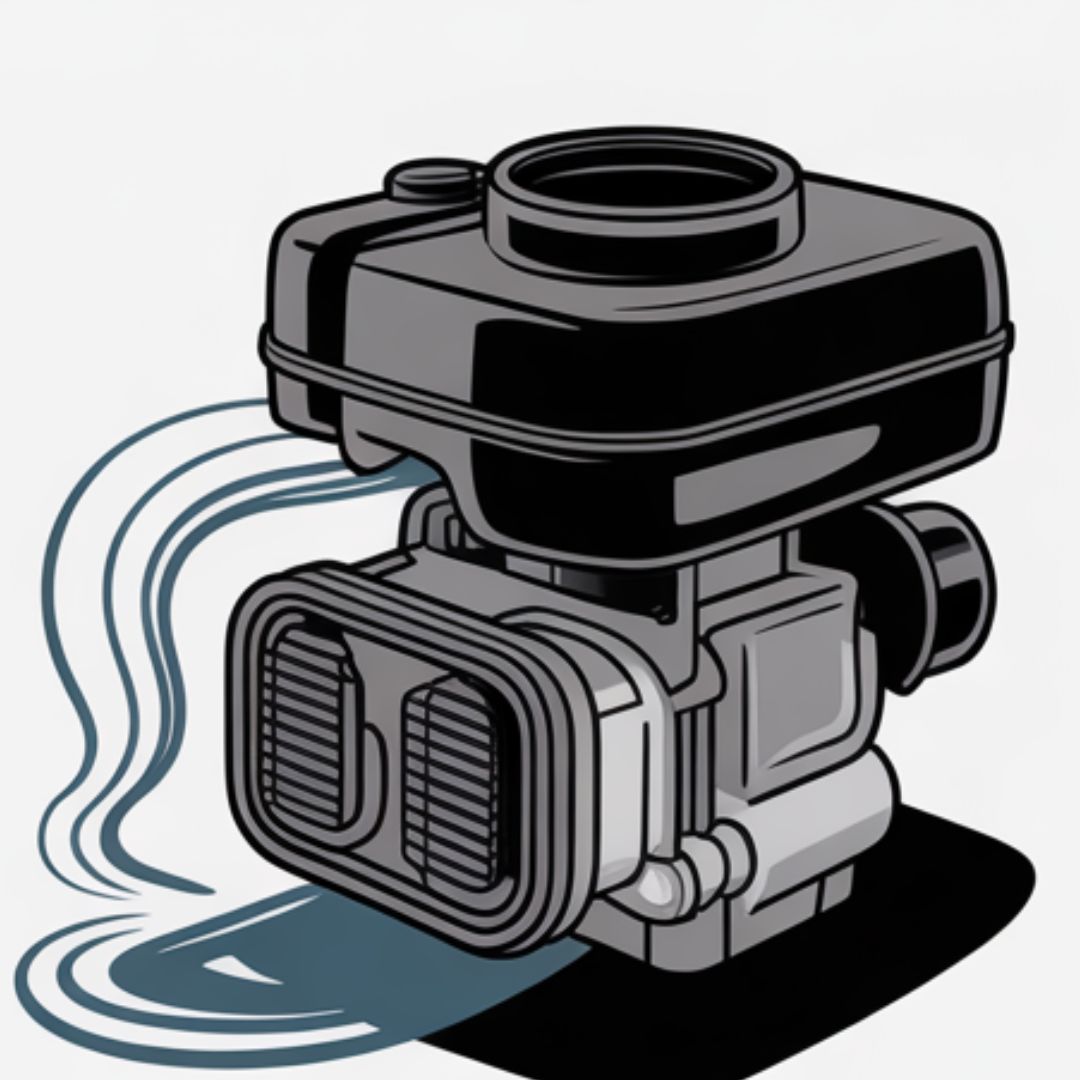
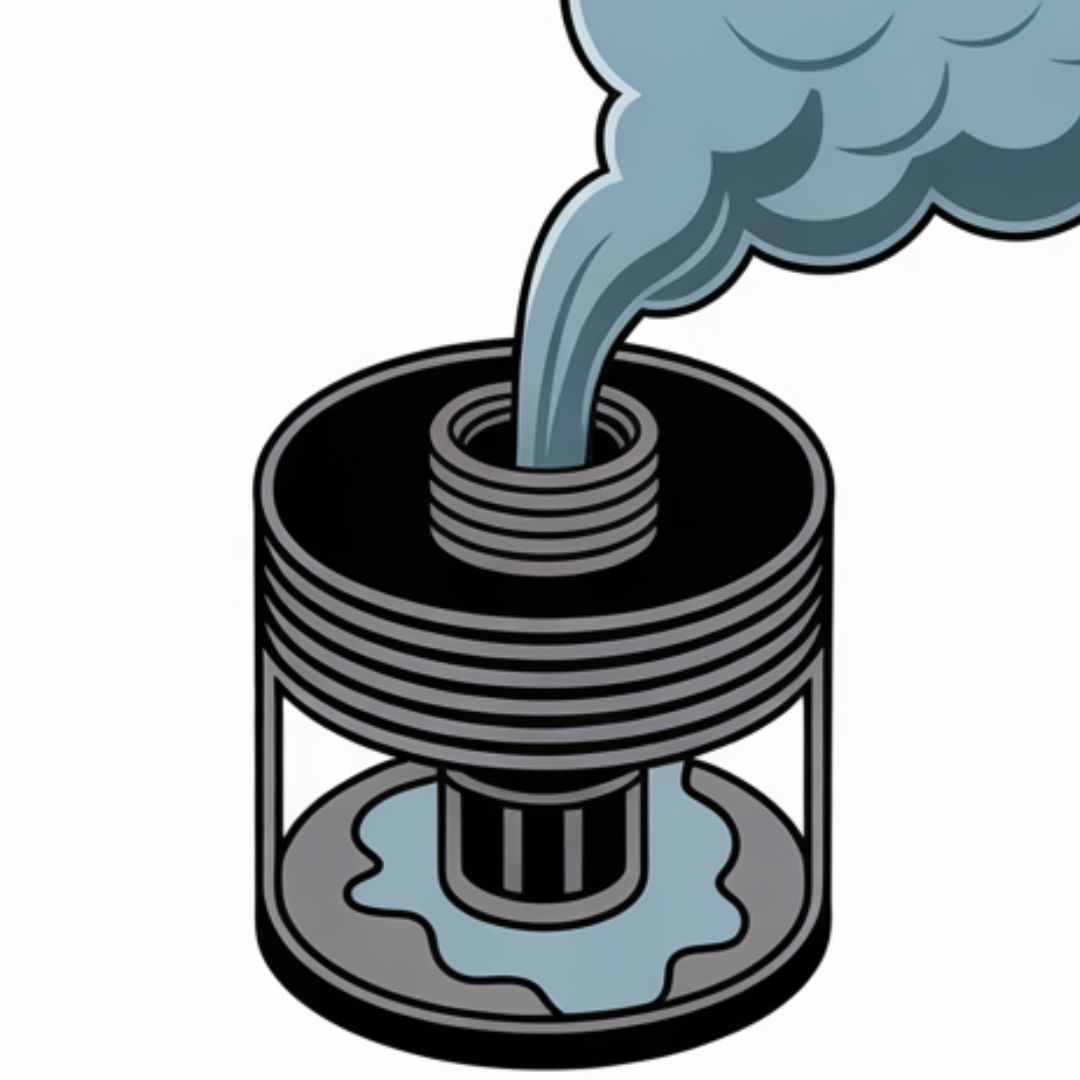
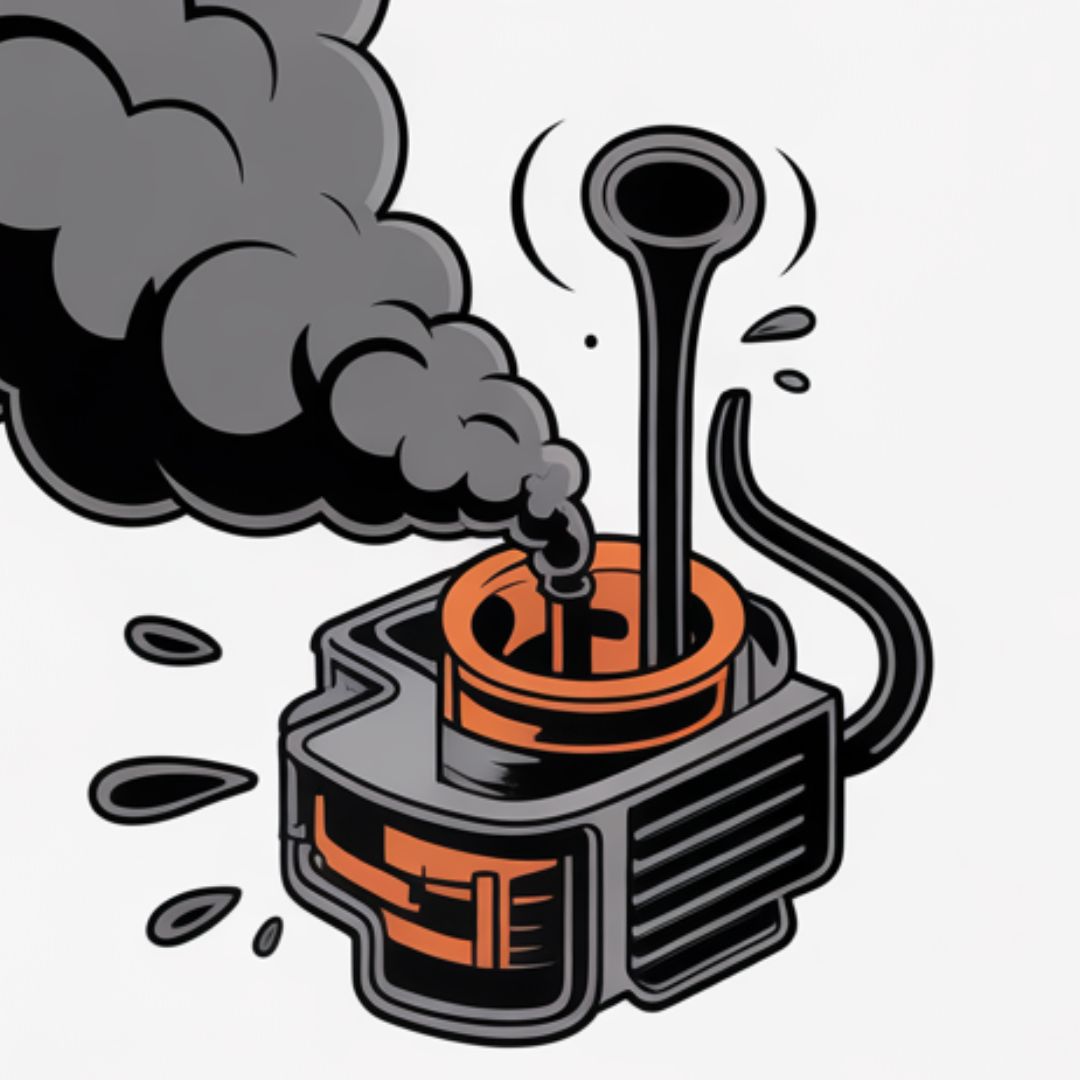
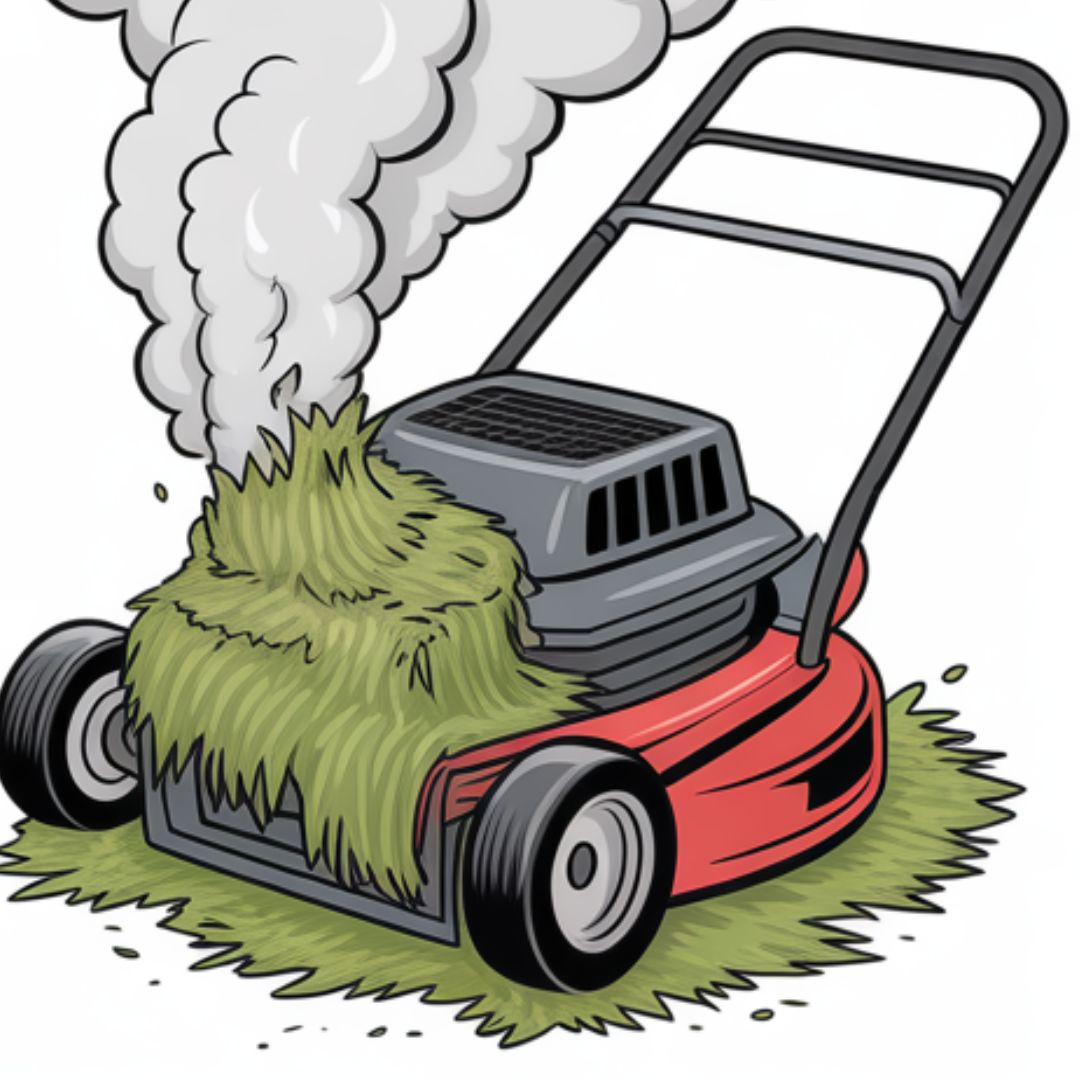
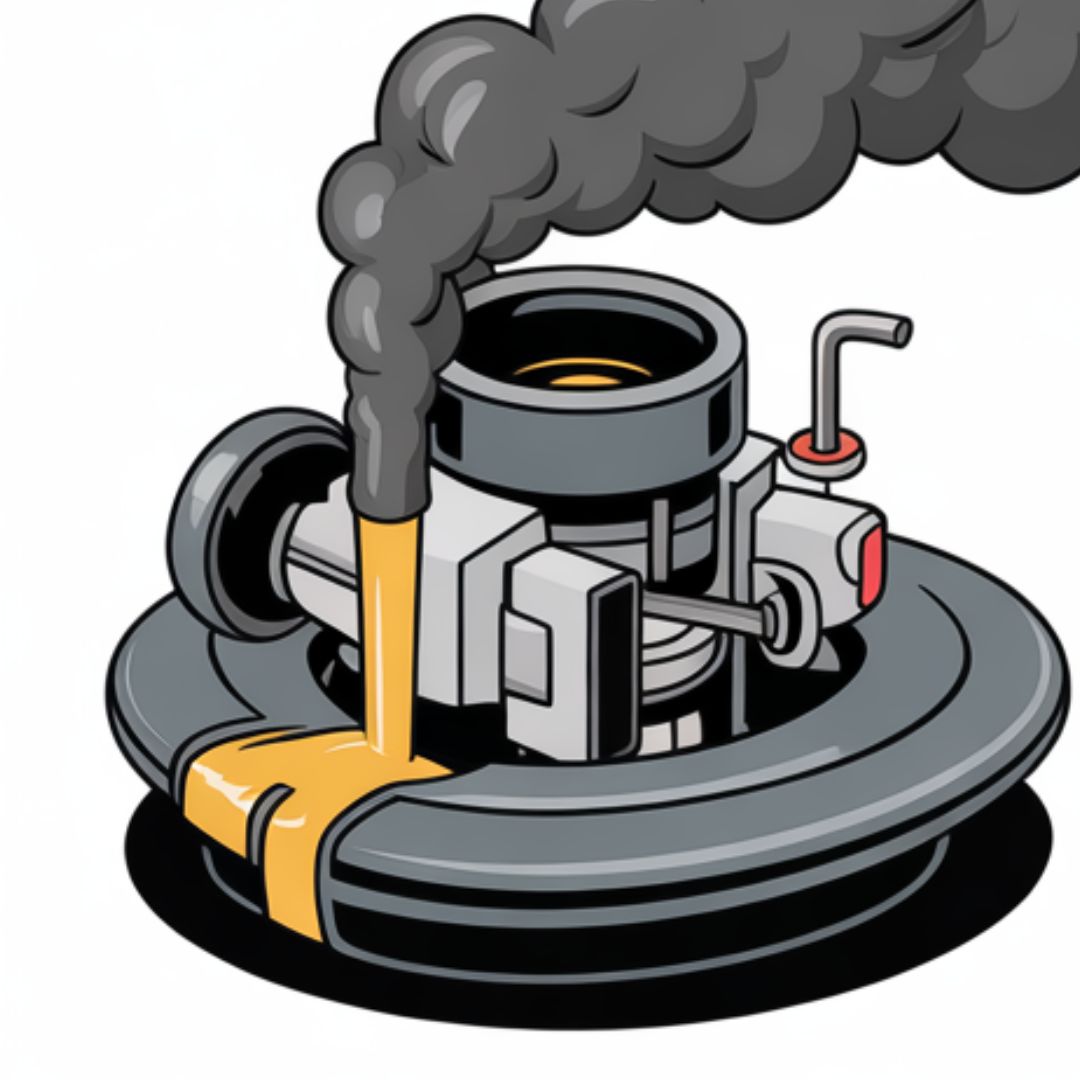
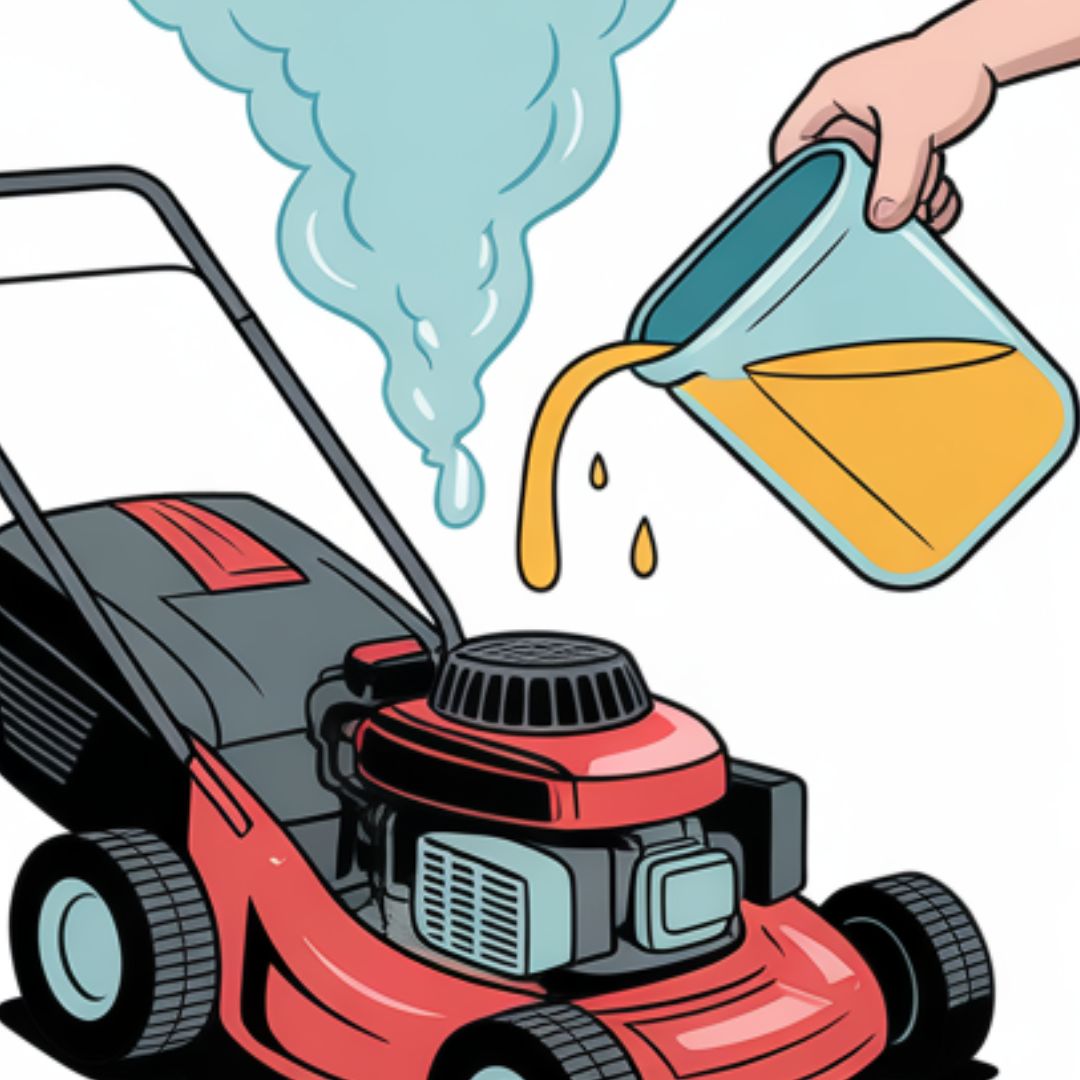
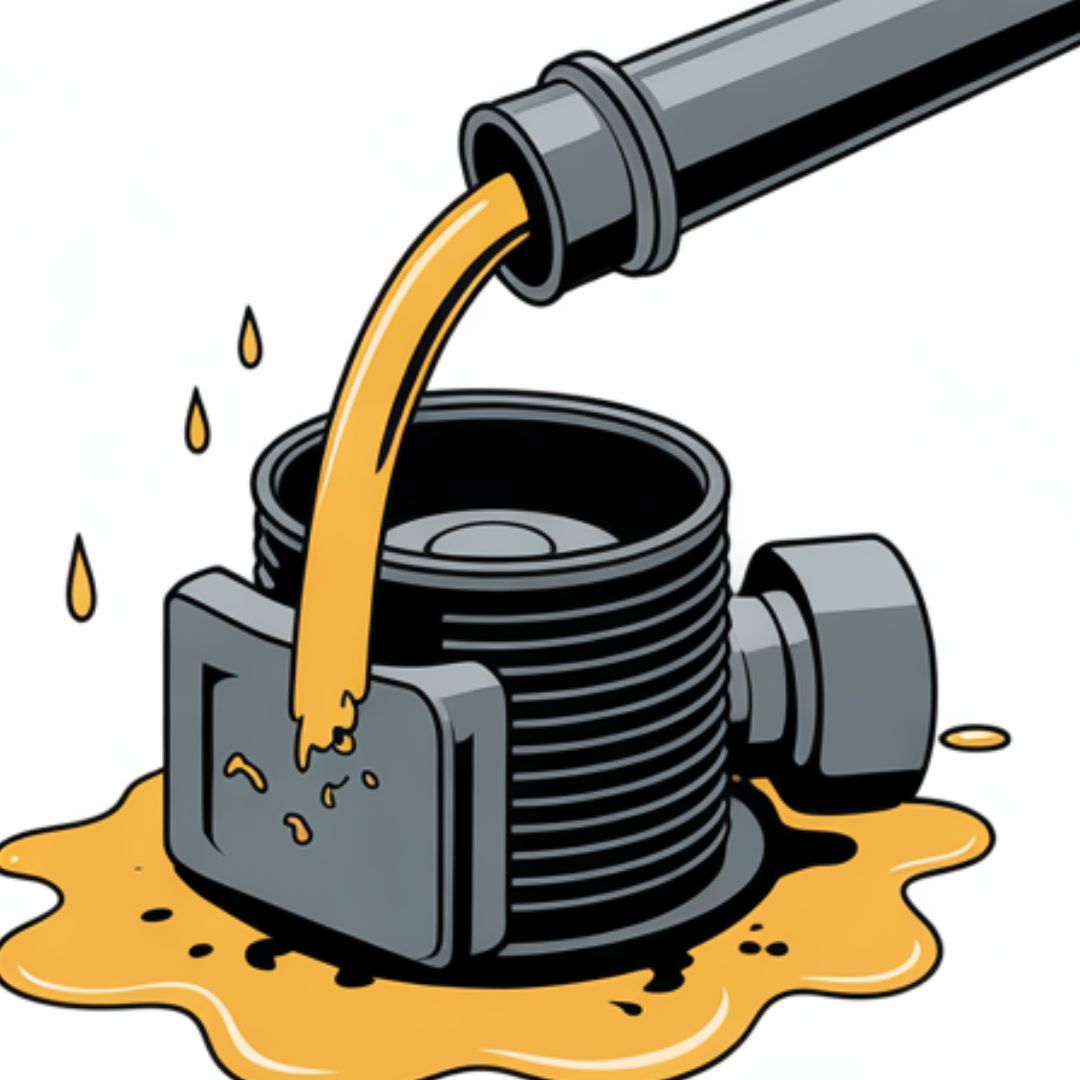
What Each Smoke Color Means
When your mower starts blowing smoke, the color is your biggest hint. Think of it like the mower trying to send you a text message — not always polite, but pretty clear once you know what to look for.
Here’s the cheat sheet every U.S. homeowner should know:
This usually means oil burned where it shouldn’t be.
Most often from overfilling, tipping wrong, or oil in the muffler.
Quick trick: If it happens after tilting — that’s it.
Your engine is aging — worn rings or a tired head gasket.
Blue smoke smells oily and lingers longer.
Fast check: If it loses power uphill → gasket issue.
Running rich — too much fuel, not enough air.
Usually a clogged air filter or a carb problem.
If it smells like gasoline → you’re definitely running rich.
This one fools people constantly.
A clump of grass stuck on the muffler smokes like crazy.
The engine is totally fine.
Here’s a quick comparison you can screenshot or save:
| Smoke Color | What It Means | Fast Check | Easy Fix |
|---|---|---|---|
| White | Oil where it shouldn’t be | Dipstick / Did you tilt it? | Drain extra oil, let burn off |
| Blue | Burning oil | Smell + power loss | Rings/gasket; monitor or repair |
| Black | Too much fuel | Air filter look dirty? | Clean filter, adjust carb |
| Burning smell | Debris on muffler | Peek at the guard | Scrape it off |
Most people panic when they see smoke, but honestly, half of this stuff is a 2-minute fix. Once you learn the smoke colors, the rest is easy. And if your mower smells like hot gasoline or burning oil? Yeah… that’s your cue to do a little investigating before it becomes a Saturday headache.
Quick Fixes You Can Try in Under 60 Seconds
When your mower starts smoking, don’t go full “engine rebuild mode” just yet. Most problems have a quick, backyard-approved fix that takes less than a minute. Here’s the stuff every U.S. homeowner should try before assuming the motor’s cooked.
1. Check the Oil Level
Fast check: Pull the dipstick. If the oil’s halfway up the tube, yeah… it’s too much. White smoke almost always shows up when the crankcase is overfilled. Drain a little out and the smoke usually clears in a minute.
2. Clean the Air Filter
If you see black smoke, your engine’s choking. Pop the filter cover off. If the filter looks like a brownie or smells like stale gas, it’s clogging the carb and making the mower run rich. Tap it out or replace it — takes 10 seconds.
3. Knock Debris Off the Muffler
A wad of wet grass on the muffler guard smokes like a bonfire. Happens constantly if you mow thick turf. Scrape it off with a stick or screwdriver and the “mystery smoke” disappears immediately.
4. Let Spilled Oil Burn Off
Just tipped your mower to pull a dog toy out? Yeah, it probably dumped oil into the muffler. Start it, let it run at half throttle for a minute or two. White smoke goes away once the oil burns off.
5. Restart After a Short Cooldown
If you get blue smoke with a burning smell on a hot day, shut the mower down for 30 seconds. Old engines with worn piston rings sometimes puff smoke when they’re roasting. A short cooldown helps.
6. Tap the Carb Bowl
If the float needle is stuck and the carburetor is overflowing, your mower will run rich and smoke black like a tiny diesel truck. Tap the carb bowl lightly with a screwdriver. If the tone changes, you probably knocked the float loose.
7. Pull the Air Box Cover
Quick trick: If your mower is choking, rough-idling, and coughing out black soot, pull the air box cover and try starting it for two seconds. If it runs smoother instantly, your air filter is the villain.
8. Smell Test (Works Every Time)
- Smells like oil → check for overfill
- Smells like gas → running rich
- Smells like burning leaves → debris on the muffler
- Smells metallic → stop mowing and check for oil leaks on hot parts
9. Level the Mower
If it’s sitting on a slope and suddenly blowing white smoke, tilt it to level ground. Oil sloshes around when the mower is leaning, especially riding mowers with looser seals.
10. Look for Wet Spots Around the Engine
Sometimes one tiny drip of oil hits the muffler and smokes like crazy. Wipe it, tighten the bolt, keep going.
These are the fast wins — the stuff lawn pros check before even grabbing a wrench. If none of these knock out the smoke, don’t stress. A deeper look at the 12 causes will tell you exactly what’s happening.
Region-Specific Smoking Problems in U.S. Yards
Different parts of the country make mowers act up in different ways. What causes white smoke in Ohio isn’t always what causes black smoke in Arizona. I’ve seen mowers behave totally normal in one ZIP code and turn into a backyard chimney in another.
Here’s the real breakdown based on actual U.S. lawn conditions — not textbook guesses.
Find Your Region’s Mower Smoke Issues
Midwest
(OH, IL, MI, MN)
Common Smoke Issues:
Brown/Gray Smoke Wet thick turf that loads the deck up with heavy clumps that bake on the muffler guard, creating a nasty burnt-grass smell that looks like smoke.
Typical Midwest Trouble:
- 🌱Thick spring grass = clogged deck
- 💧Wet patches = white smoke when the engine strains
- 🔥Grass buildup on the muffler = “campfire smell”
Fast check:
Scrape the deck and knock off anything stuck to the muffler before mowing. Wet grass turns into smoke faster than you think.
South
(TX, FL, GA)
Common Smoke Issues:
Blue Smoke Southern heat destroys thin oil. If you run 5W-30 in August Texas weather, don’t be surprised if the mower starts puffing blue smoke as it burns through the oil like a cheap candle.
Real-world stuff down here:
- 🛢️SAE 30 works better in the heat
- 🌡️Hot weather thins oil → burning smell
- 🔥Engines overheat quick if cooling fins clog
Quick trick:
Blow out the cooling fins every couple of mows. Southern dust cakes them fast.
Northeast
(NY, PA, MA)
Common Smoke Issues:
White Smoke Up here, early-season mornings are colder, wetter, and the air is heavier. So you’ll see more white smoke during cold starts. Totally normal.
Common NE mower smoke quirks:
- 💨Moisture in the muffler burning off
- ☁️White smoke during warmup
- 🌱Spring grass clumps steaming on the muffler
Fast check:
If it clears after 30 seconds, you’re fine. Let the mower warm up for one minute before dropping the blade.
Pacific Northwest
(WA, OR)
Common Smoke Issues:
Black Smoke Everything is moist in the PNW — the grass, the soil, the mower, the air filter… everything. Wet mulch sticks to the muffler and smokes like a tiny bonfire.
PNW smoke issues:
- 🌿Moss + moisture = clog city
- 🔥Debris steaming on the muffler
- 💨Black smoke from damp, half-clogged air filters
Fast fix:
Let the mower sit in the sun for 10 minutes before mowing. Drier mower = less smoke.
Southwest
(AZ, NM, NV)
Common Smoke Issues:
Black Smoke If you mow out here, dust is your biggest enemy. Dust plugs the air filter, chokes the carb, and makes the mower run rich — pumping out black smoke with a strong gas smell.
Southwest patterns:
- 🌬️Filters clog insanely fast
- ⚙️Carburetor gets dusty → rich mix
- 🌡️Hot climate thins oil → occasional blue smoke
Quick trick:
Tap the air filter every mow. No shame. Everyone does it.
Central U.S.
(KS, OK, MO)
Common Smoke Issues:
“Fake Smoke” Windy states throw sticks, grass, and dust into every opening on the mower. When debris gets stuck to the muffler guard, you’ll get tons of “fake smoke.”
Central U.S. patterns:
- 🌬️Strong winds blow debris straight into the deck
- 🍃Leaves and seed heads collect near hot parts
- 🔍Smoke appears suddenly and disappears quickly
Fast check:
Look for anything that blew behind the muffler — leaves, mulch, seed heads.
Smoke Color Reference Guide
| Smoke Color | Most Likely Cause | Quick Fix |
|---|---|---|
| White | Moisture burning off (normal on cold starts) | Let engine warm up 1-2 minutes |
| Blue | Oil burning (often from thin oil in heat) | Use SAE 30 in hot climates |
| Black | Fuel-rich mixture (clogged air filter) | Clean/replace air filter |
| Brown/Gray | Grass/debris burning on hot engine parts | Clean deck and muffler area |
Different states, different smoke. But once you understand how your local climate beats up your mower, you’ll spot the problem in seconds.
How to Prevent Smoking in the Future (Simple Habits)
Most mowers only start smoking because they’re being ignored or pushed too hard. A few tiny habits — the kind you can do in under a minute — keep the engine clean, stop white smoke, prevent black smoke, and save you from coughing on burning oil next Saturday.
Here’s the stuff that actually works:
Use fresh gas every 30 days
Stale fuel is one of the biggest troublemakers.
Old gas burns uneven and sends tiny puffs of confused white smoke.
Clean or tap out your air filter
A dirty filter chokes the engine and makes black smoke.
Quick trick: If it looks like a chocolate cookie, replace it.
Never tip the mower carb-side down
Oil floods the muffler and smokes like crazy.
Always tilt with the carb facing UP.
Scrape the deck every few mows
Grass stuck on the muffler smokes like a campfire.
Use a $2 putty knife — old school, works great.
Change the oil every 25 hours
Dark “coffee” oil = overheating + blue smoke.
Fresh oil saves the engine.
Check the cooling fins
Dust blocks airflow and cooks the engine.
Brush or blow them out twice a season.
Store your mower on level ground
Storing on a slope lets oil seep into places it shouldn’t.
Check for small oil leaks early
One drip on the exhaust makes tons of smoke.
Wipe the block weekly — takes 10 seconds.
Use the right oil for your climate
- Hot states: SAE 30
- Cooler climates: 10W-30
Wrong oil = blue smoke.
Run full throttle while mowing
These engines are designed for wide-open mowing.
Babying it causes black smoke.
Keep the carburetor clean
Dirty carbs run rich → black soot & smoke.
Clean once per season.
Warm it up 20–30 seconds
Cold engines puff a little white smoke.
Warm-up fixes it. No big deal.
Small habits, huge difference. Do a few of these and your mower will breathe clean, run cooler, and stop acting like it’s trying to signal the fire department every time you cut the yard.
Common Mistakes People Make When Their Mower Starts Smoking
When a mower starts throwing out white smoke, blue smoke, or black smoke, most folks panic and do the exact opposite of what they should. Happens all the time — especially in summer when everyone’s trying to knock the yard out before the heat gets stupid.
Here are the biggest “yeah… don’t do that” moments I see every season:
Adding More Oil Because of White Smoke
White smoke usually means too MUCH oil, not too little.
Adding more turns your mower into a fog machine.
Fast check Always check dipstick first.
Tipping the Mower the Wrong Way
Tilting carb-side down sends oil into the muffler → smoke everywhere.
Always tilt the carburetor **UP**. Always.
Ignoring Black Smoke
Black smoke = engine running rich from clogged filter or carb issues.
It may still mow — but it’s fouling itself inside.
You wouldn’t drive your truck like that (I hope).
Cleaning the Air Filter With Water
Paper filters don’t take showers — they die.
If it’s soaked or dirty, replace it.
It’s a $7 fix. Don’t overthink it.
Using Last Year’s Gas
Old gas burns badly and causes white puffs + sputter pops.
If it’s older than 30–60 days, drain it. No debate.
Running Full Throttle During Burning Oil Smell
Blue smoke = worn rings or spicy head gasket.
Ease off the throttle — don’t cook the engine alive.
Ignoring Little Oil Leaks
One drip on the muffler makes huge smoke clouds.
Usually just a loose bolt on the valve cover.
Wipe it weekly. Easiest habit ever.
Power-Washing the Engine
High-pressure water forces dirt into the carb, soaks filters, and contaminates oil.
Then the mower blows white smoke and refuses to idle.
Better option Use a brush — not a power washer.
Letting Grass Build Up on the Muffler
Wet clumps on the muffler guard burn like a campfire.
Scrape it off — it takes five seconds.
Running It With the Choke On
If the choke sticks on, you’ll get black smoke instantly.
If it smells like raw gas, check the choke lever first.
Ignoring Cooling Fins
Clogged cooling fins overheat the engine and blow blue smoke.
Common in hot southern climates.
Quick trick Blow them out twice a season.
Buying the Wrong Oil Weight
Thin oil in high heat → blue smoke.
Thick oil in cold weather → slow starts + white smoke.
Know your climate before buying oil.
Troubleshooting Fast (Simple Do/Don’t Guide)
When your mower starts smoking, sometimes you just want a quick “if it looks like this… do that” answer. No overthinking. No deep engine philosophy. Just backyard logic.
White Smoke
What it means: Too much oil, mower tipped, or oil inside the muffler.
Fast check: Check dipstick. Did you tilt the mower recently?
Easy fix: Drain excess oil and let it burn off for 1–2 minutes.
Blue Smoke
What it means: Burning oil, worn piston rings, tired head gasket.
Fast check: Smell + performance drop on hills.
Easy fix: Light smoke = keep mowing; constant smoke = repair soon.
Black Smoke
What it means: Running rich, clogged air filter, dirty carb.
Fast check: Pop the air filter cover.
Easy fix: Clean or replace filter; adjust carb.
Burning Smell
What it means: Grass/mulch on muffler guard or small oil leak.
Fast check: Look under the heat shield.
Easy fix: Scrape debris, tighten bolts, wipe oil.
Smoke + Fuel Smell
What it means: Stuck carb needle and overflowing bowl.
Fast check: Tap the carb bowl.
Easy fix: Clean the carb and free the float.
Smoke at Cold Start
What it means: Moisture burning off.
Fast check: Wait 20–30 seconds.
Easy fix: Totally normal if it clears quickly.
Half of mower troubleshooting is just knowing where to look first. And honestly? The engine usually tells on itself.
FAQs
Huge cloud of white smoke?
Your mower likely gulped some oil.
Drain a little out, let it run a minute — it usually clears fast.
Why does it smoke when starting?
Cold mornings, moisture, or a little oil sitting in the chamber.
Normal if it fades in 20–30 seconds. If not: check filter, oil level, or spillover.
Is smoking bad?
White = leftover oil, usually fine.
Black = rich carb mix; runs, but not ideal.
Blue = burning oil — don’t ignore.
How to fix a smoking mower?
• Check oil level
• Clean air filter
• Clear muffler guard
• Tap carb bowl
• Level mower
If still smoking — could be burning oil or carb issues.
Smoke after tipping it?
You tipped it the wrong way — the engine drank oil.
Always tip the carburetor upward to avoid oil flooding the muffler.
Can old gas cause smoke?
Oh yeah. Old gas burns unevenly.
White puffs or rich black smoke both = stale fuel. Replace it.
Black soot blowing out?
Engine is choking — rich carb mix or clogged air filter.
Clean or replace filter. Usually a 30-second fix.
Why more smoke on hills?
Older engines slosh oil where it shouldn’t go.
Blue smoke + loss of power = tired head gasket.
White smoke after oil change?
Normal if you spilled a little or overfilled it slightly.
If it lasts several minutes, oil level is still too high.
Conclusion
At the end of the day, a smoking mower isn’t the end of the world. Most of the time, it’s just your engine trying to tell you something simple — “hey, I’ve got too much oil in here,” or “my air filter can’t breathe,” or “you tipped me the wrong way again, buddy.”
If you can read the smoke — white smoke, blue smoke, black smoke, burning smell — you can fix 90% of these problems in your driveway without breaking a sweat. Half of this stuff is quick, backyard-level troubleshooting: tapping the carb, scraping the muffler guard, leveling the mower, or dumping out old gas that smells like it survived the Civil War.
Remember the basics:
- White smoke = oil where it shouldn’t be
- Black smoke = fuel mix too rich
- Blue smoke = burning oil from wear or leaks
- Burning smell = debris cooking on the muffler
Keep the simple habits going — clean the air filter, use fresh gas, check the cooling fins, scrape the deck, pick the right oil weight for your climate — and your mower will stay out of trouble. These little machines are tougher than people think. They just get cranky when neglected.
And if your mower ever throws a giant cloud across the yard and makes you question your life choices? Don’t stress. Every lawn guy in America has been there. The trick is knowing what color the smoke is… and what it’s trying to say.

I’m David man behind Lawn Mowerly; I’ve been dealing with lawnmowers and Tractors with my father since I was a kid. I know every make and model and what each one is capable of and love helping people find the perfect equipment for their needs.
